With regards to maximizing your time, vitality, and leads to the gymnasium, compound workouts stand above the remainder. Not like isolation workouts—which goal only one muscle—compound workouts work a number of muscle teams throughout multiple joint, making them important for constructing energy, energy, coordination, and muscle mass.
These workouts type the bedrock of purposeful coaching, bodybuilding, and athletic efficiency packages. This complete information affords variations and concepts catering to all ranges, from learners to superior lifters.
What Are Compound Workouts?
Compound workouts contain multi-joint motion patterns that activate a number of muscle mass without delay. These embrace squats, deadlifts, presses, rows, and pull-ups—foundational strikes in best energy and conditioning packages.
Advantages of Compound Actions
- Effectivity: Practice extra muscle mass in much less time.
- Muscle Achieve: Set off better hypertrophic response.
- Caloric Burn: Enhance vitality expenditure throughout and after exercises.
- Hormonal Response: Promote testosterone and progress hormone launch.
- Joint Stability: Enhance neuromuscular coordination and real-life motion patterns.
- Improved purposeful energy for every day actions or sports activities
The Important Compound Workouts for Each Health Objective
1. Barbell Squat
Barbell Squat is a compound train that works the quadriceps, glutes, hamstrings, core, and decrease again. As a foundational decrease physique motion, it’s often utilized in energy coaching, powerlifting, hypertrophy packages, and athletic efficiency routines. It additionally performs a key function in bettering stability, mobility, and purposeful energy.
Advisable repetitions
- For hypertrophy (muscle progress): 3–5 units of 8–12 reps
- For powerlifting (most energy): 4–6 units of 1–5 reps at excessive depth (85–95% 1RM)
- For common energy coaching: 3–5 units of 4–6 reps
- For purposeful health or common conditioning: 2–4 units of 10–15 reps utilizing average weight and managed tempo
- For endurance or mobility emphasis: 2–3 units of 12–20 reps with gentle to average load
Variations:
- Body weight squat, Pin squat, Pendulum squat, Smith machine squat

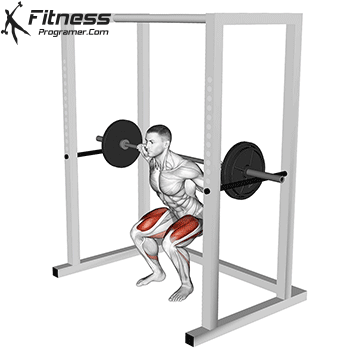
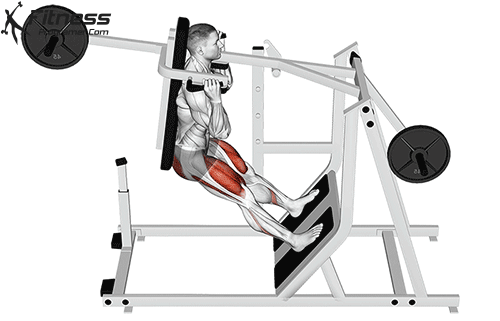

2. Deadlift
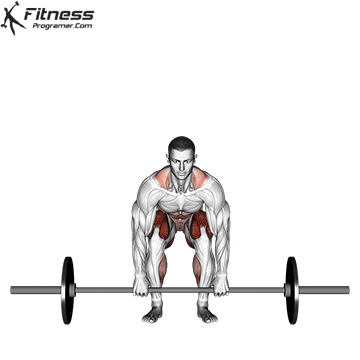
Deadlift is a compound train that works the glutes, hamstrings, decrease again, traps, lats, and core. It’s some of the efficient full-body lifts for creating posterior chain energy, bettering hip hinge mechanics, and enhancing general athletic energy. As a basic motion, it’s broadly utilized in powerlifting, energy coaching, hypertrophy, and purposeful health packages.
Advisable repetitions
- For hypertrophy (muscle progress): 3–4 units of 8–12 reps utilizing average to heavy load
- For powerlifting (most energy): 4–6 units of 1–5 reps at excessive depth (85–95% 1RM)
- For common energy coaching: 3–5 units of 4–6 reps
- For purposeful or athletic coaching: 3–4 units of 6–10 reps, specializing in type, pace, and posterior chain activation
- For endurance or metabolic conditioning: 2–3 units of 12–20 reps with lighter weights and managed tempo
Variations:
- Dumbbell deadlift, Lure bar deadlift, Lever deadlift, Sumo deadlift
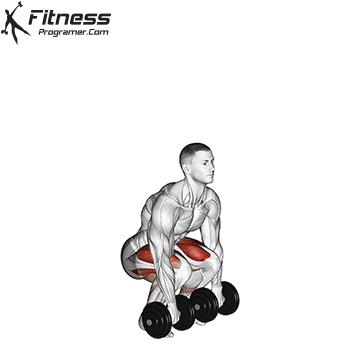
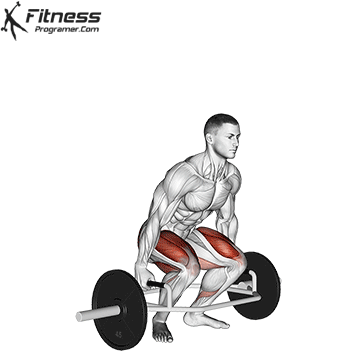
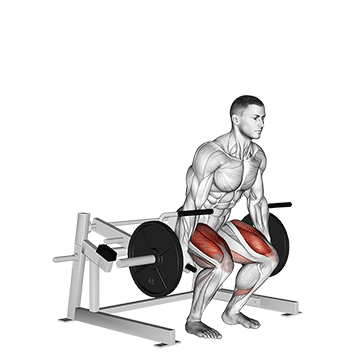

3. Barbell Bench Press
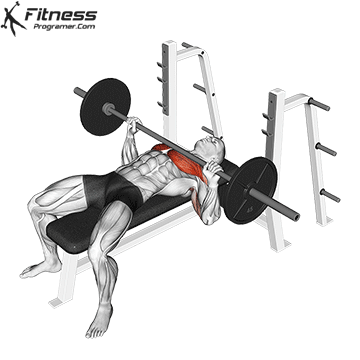
Barbell Bench Press is a compound train that works the chest muscle mass (pectorals) in addition to the triceps and anterior (entrance) deltoids. As a foundational higher physique push motion, it’s generally included in energy coaching, hypertrophy routines, powerlifting, and sports activities efficiency packages. It builds higher physique mass, urgent energy, and helps improved efficiency in pushing duties.
Advisable repetitions
- For hypertrophy (muscle progress): 3–5 units of 8–12 reps utilizing average to heavy weight
- For powerlifting (most energy): 4–6 units of 1–5 reps at excessive depth (85–95% 1RM)
- For common energy coaching: 3–4 units of 4–6 reps
- For purposeful coaching or sport-specific work: 3–4 units of 6–10 reps, specializing in management and bar path effectivity
- For muscular endurance: 2–3 units of 12–20 reps with lighter load
Variations:
- Dumbbell press, Incline press, Decline press, Crush press
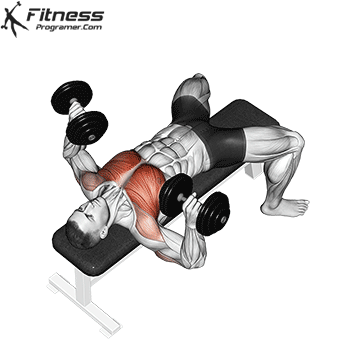
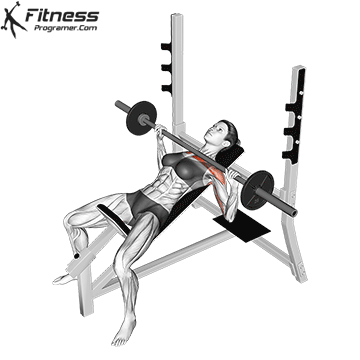
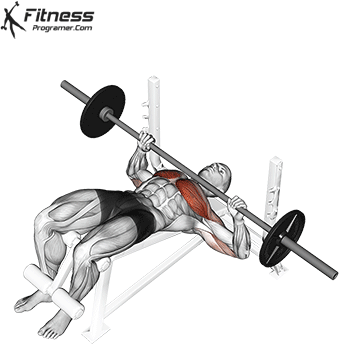
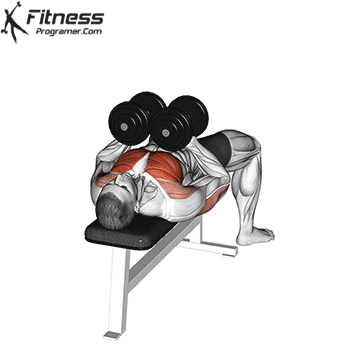
4. Pull-Up (or Assisted Pull-Up)

Pull-Up is a compound higher physique train that primarily targets the latissimus dorsi (lats), whereas additionally partaking the biceps, rear deltoids, rhomboids, traps, and core. It’s a body weight pulling motion typically utilized in energy coaching, hypertrophy routines, calisthenics, and purposeful health to enhance higher physique pulling energy, grip endurance, and postural management. Assisted variations utilizing bands or machines make it accessible for learners.
Advisable repetitions
- For learners: 2–3 units of 5–8 assisted reps, step by step lowering help over time
- For hypertrophy (muscle progress): 3–4 units of 6–12 reps (use help if wanted to remain in vary)
- For energy coaching: 3–5 units of three–6 reps (weighted pull-ups elective)
- For calisthenics or purposeful coaching: 3–4 units of max reps or 6–10 reps with sluggish tempo
- For muscular endurance: 2–3 units of 10–20 reps (band-assisted or body weight)
Variations:
- Chin-up (extra biceps), Commander pull-up, Archer pull-up, Muscle-up
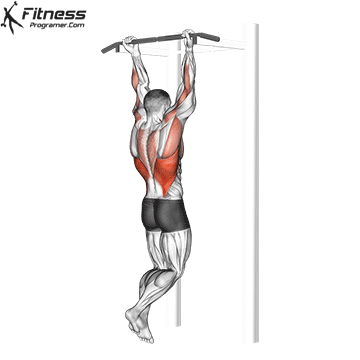
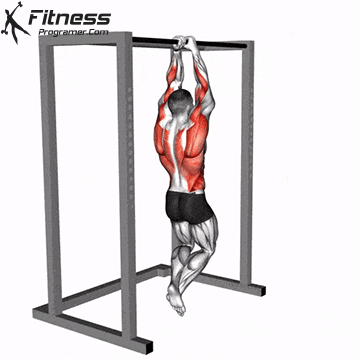
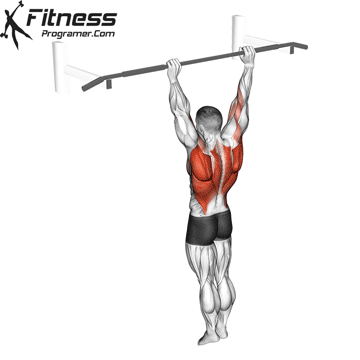
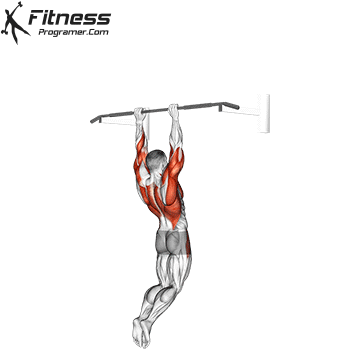
5. Standing Overhead Press
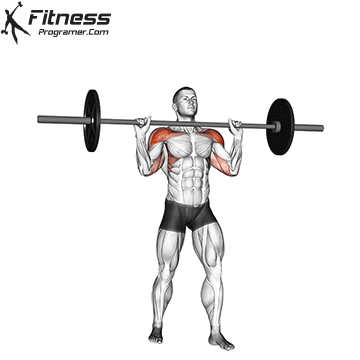
Standing Overhead Press is a compound train that targets the shoulders (primarily the anterior and medial deltoids) whereas additionally working the triceps, higher chest, trapezius, and core stabilizers. This vertical urgent motion is a key part in energy coaching, hypertrophy, athletic improvement, and purposeful health. As a result of it’s carried out standing, it additionally enhances core engagement, postural management, and full-body stability.
Advisable repetitions
- For hypertrophy (muscle progress): 3–5 units of 8–12 reps utilizing average weight
- For energy improvement: 4–6 units of three–6 reps with heavy load
- For athletic or purposeful coaching: 3–4 units of 6–10 reps with give attention to full-body management
- For muscular endurance: 2–3 units of 12–15 reps with lighter weights
- For learners: 2–3 units of 8–10 reps, emphasizing type and shoulder mobility
Variations:
- Seated shoulder press, Kettlebell press, Alternating dumbbell press, Smith machine overhead press
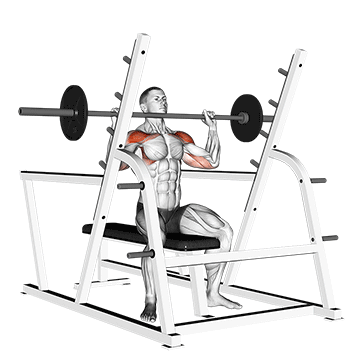
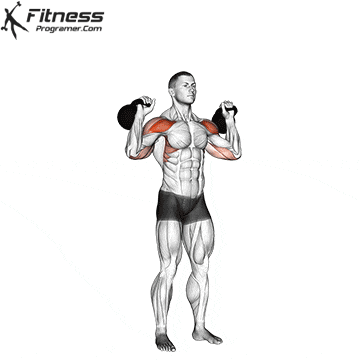
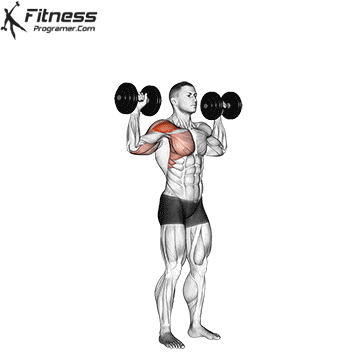
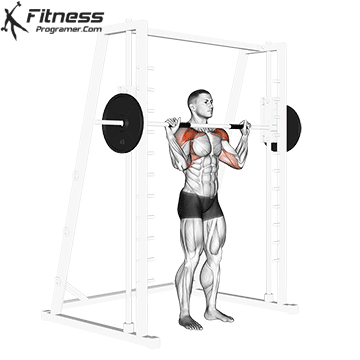
6. Barbell Bent-Over Row
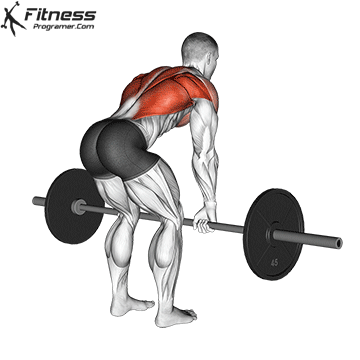
Barbell Bent-Over Row is a compound pulling train that primarily targets the latissimus dorsi, rhomboids, rear deltoids, traps, and spinal erectors, whereas additionally partaking the biceps and core. It’s broadly utilized in energy coaching, bodybuilding (hypertrophy), powerlifting help work, and purposeful health to construct a sturdy, thick again and enhance postural assist and horizontal pulling energy.
Advisable repetitions
- For learners: 2–3 units of 8–10 reps, emphasizing correct hip hinge and again place
- For hypertrophy (muscle progress): 3–4 units of 8–12 reps utilizing average to heavy weight
- For energy coaching: 3–5 units of 4–6 reps with managed tempo and heavier hundreds
- For athletic or purposeful efficiency: 3–4 units of 6–10 reps, specializing in type and again engagement
- For muscular endurance: 2–3 units of 12–15 reps with lighter load and strict type
Variations:
- Pendlay row, T-bar row, Dumbbell row, Smith machine row
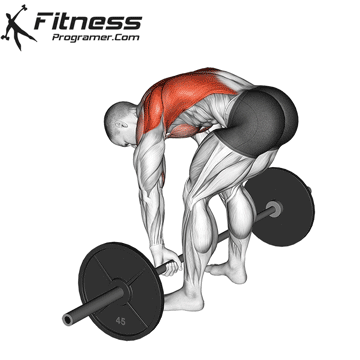
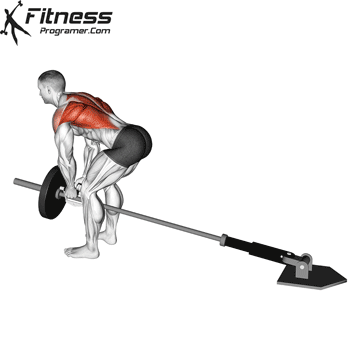
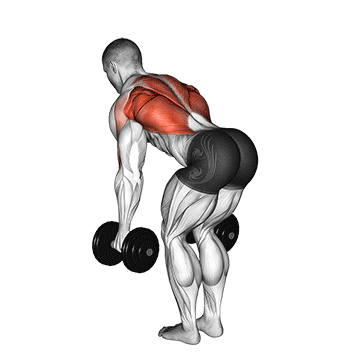
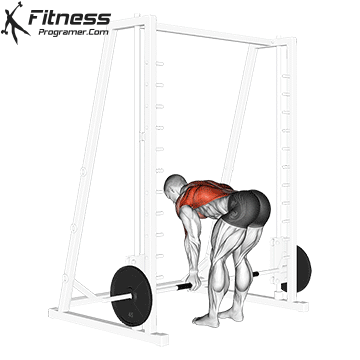
7. Entrance Squat

Entrance Squat is a compound lower-body train that targets the quadriceps extra instantly than the again squat, whereas additionally partaking the glutes, hamstrings, core, and higher again. Holding the barbell within the entrance rack place emphasizes torso uprightness and core activation, making it a worthwhile addition to energy coaching, hypertrophy routines, Olympic weightlifting, and purposeful health packages. It additionally helps enhance mobility, posture, and athletic motion patterns.
Advisable repetitions
- For learners: 2–3 units of 6–10 reps, practising bar place and depth management
- For hypertrophy (muscle progress): 3–4 units of 8–12 reps with average load
- For energy coaching: 4–5 units of three–6 reps with heavier weight and correct bracing
- For purposeful or athletic coaching: 3–4 units of 6–10 reps, specializing in management and mobility
- For muscular endurance or conditioning: 2–3 units of 12–15 reps with lighter load
Variations:
- Goblet squat, plie squat, Kettlebell squat, Sumo squat
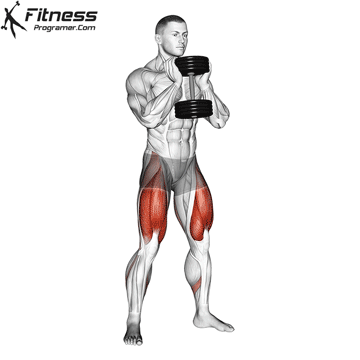
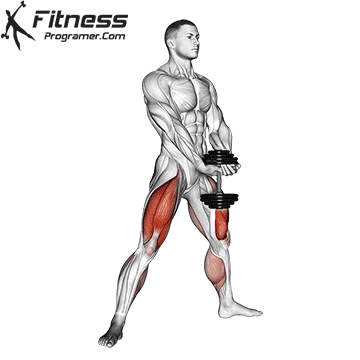
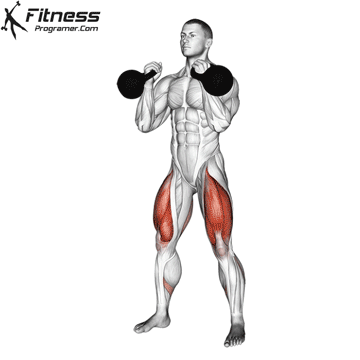
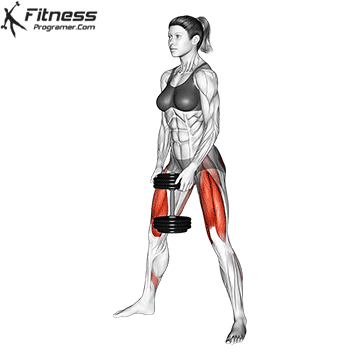
8. Romanian Deadlift
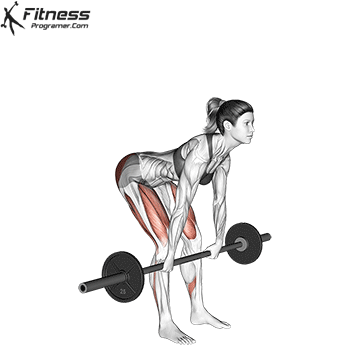
Romanian Deadlift (RDL) is a compound hinge motion that primarily targets the hamstrings and glutes, whereas additionally partaking the decrease again, adductors, and core. Not like the standard deadlift, the RDL emphasizes eccentric management and a deeper stretch within the posterior chain. It’s generally utilized in hypertrophy coaching, energy improvement, athletic conditioning, and rehabilitative packages to enhance hamstring energy, hip mobility, and damage prevention.
Advisable repetitions
- For learners: 2–3 units of 8–10 reps, specializing in hip hinge type and vary of movement
- For hypertrophy (muscle progress): 3–4 units of 8–12 reps with a give attention to tempo and stretch
- For energy coaching: 3–5 units of 5–8 reps utilizing average to heavy hundreds
- For purposeful or athletic efficiency: 3–4 units of 6–10 reps emphasizing hip hinge mechanics
- For endurance or corrective work: 2–3 units of 12–15 reps with lighter weight and sluggish tempo
Variations:
- Dumbbell RDL, Single leg deadlift, DB stiff leg deadlift, Barbell stiff leg deadlift
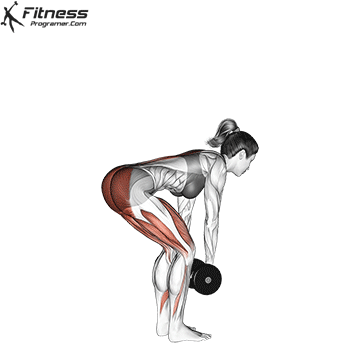


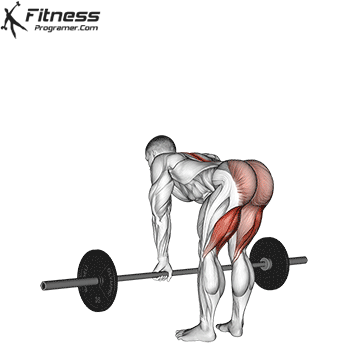
9. Strolling Lunge

Strolling Lunge is a compound lower-body train that works the quadriceps, glutes, hamstrings, and calves, whereas additionally partaking the core and bettering stability, coordination, and hip mobility. Not like stationary lunges, the strolling variation provides a dynamic ingredient, making it a staple in hypertrophy routines, purposeful coaching, athletic improvement, and conditioning circuits. It additionally helps appropriate muscle imbalances between legs.
Advisable repetitions
- For learners: 2–3 units of 6–10 steps per leg, beginning with body weight or gentle dumbbells
- For hypertrophy (muscle progress): 3–4 units of 8–12 steps per leg with average load
- For energy coaching: 3–5 units of 6–8 steps per leg utilizing heavy dumbbells or barbell
- For purposeful or athletic coaching: 3–4 units of 10–12 steps per leg, specializing in stride and management
- For muscular endurance or conditioning: 2–3 units of 12–20 steps per leg with lighter load or body weight
Variations:
- Static, lunge, Energy lunge, Reverse lunge, Curtsey lunge
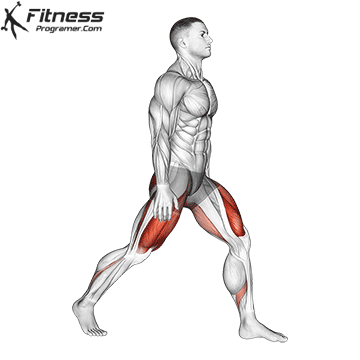

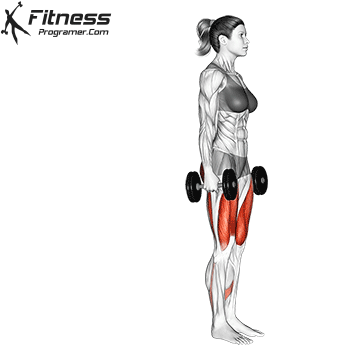
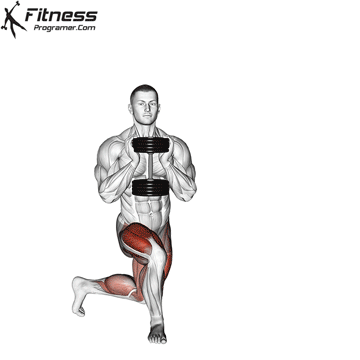
10. Kettlebell Swing
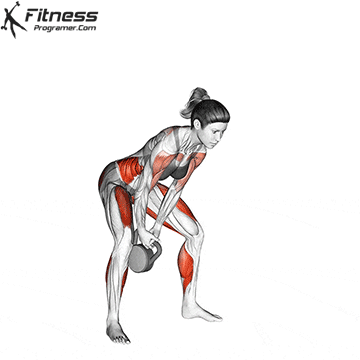
Kettlebell Swing is a dynamic compound train that targets the glutes, hamstrings, hips, and core, whereas additionally activating the lats, shoulders, and grip. It’s a ballistic hip hinge motion that builds explosive energy, muscular endurance, and cardiovascular conditioning. Generally utilized in purposeful coaching, fat-loss circuits, athletic improvement, and conditioning packages, the kettlebell swing improves hip drive, posture, and total-body coordination.
Advisable repetitions
- For learners: 2–3 units of 10–15 swings, specializing in hip hinge mechanics and management
- For energy and athletic efficiency: 3–5 units of 10–15 swings specializing in explosive hip extension
- For hypertrophy (as a posterior chain finisher): 3–4 units of 12–20 swings with average weight
- For metabolic conditioning or fats loss: 3–5 units of 15–30 swings, probably mixed into circuits
- For endurance: 2–3 units of 30–50 swings with gentle to average weight and sustained tempo
Variations:
- One Arm Kettlebell Swing, One Arm Kettlebell Snatch, Kettlebell Clear and Jerk, Kettlebell cling clear
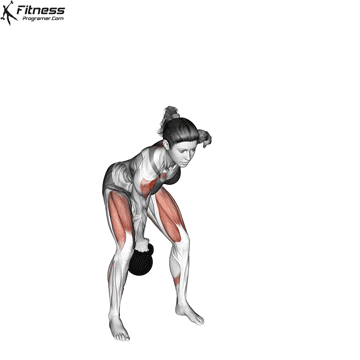

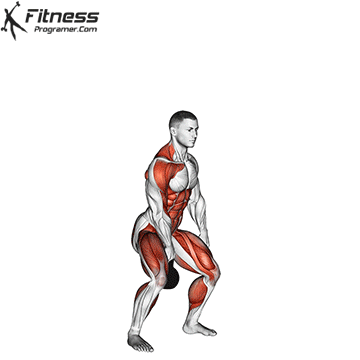
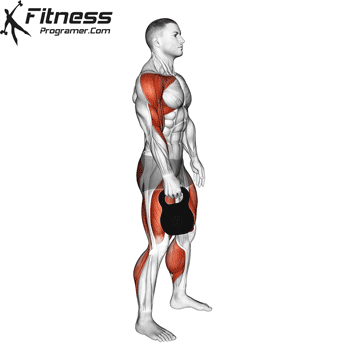
11. Thruster
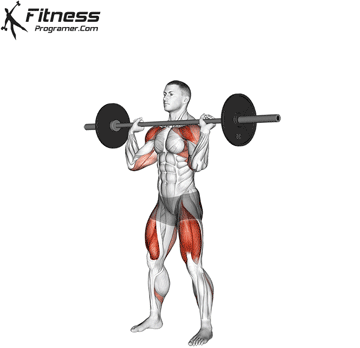
Thruster is a robust compound motion that mixes a entrance squat with an overhead press, working the quadriceps, glutes, shoulders, triceps, core, and higher again. It’s a full-body train that enhances energy, coordination, and metabolic conditioning, making it a staple in CrossFit, HIIT, purposeful health, and athletic efficiency packages. The thruster develops explosive energy, improves motion effectivity, and elevates coronary heart charge shortly for fat-burning outcomes.
Advisable repetitions
- For learners: 2–3 units of 6–10 reps, beginning with gentle dumbbells or kettlebells to be taught motion mechanics
- For metabolic conditioning or fats loss: 3–5 units of 10–20 reps, typically utilized in timed circuits or AMRAPs
- For hypertrophy: 3–4 units of 8–12 reps utilizing average weight and regular tempo
- For purposeful health or CrossFit: 3–5 units of 10–15 reps, specializing in fluidity and pace beneath fatigue
- For strength-endurance: 2–3 units of 12–20 reps with average load
Variations:
- Kettlebell thruster, Overhead squat, Heaving snatch stability, Landmine squat to press
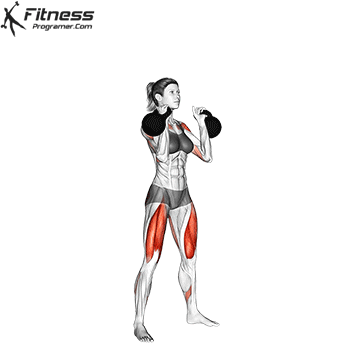
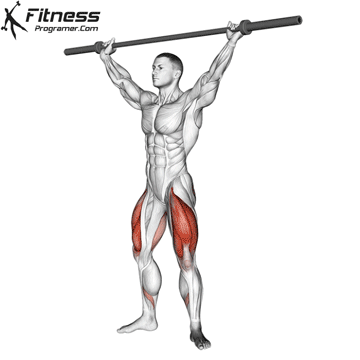
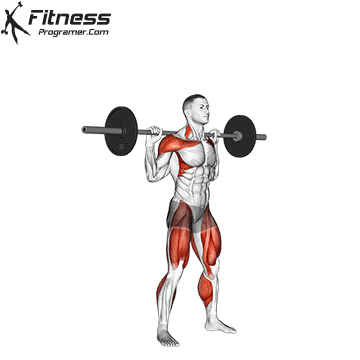
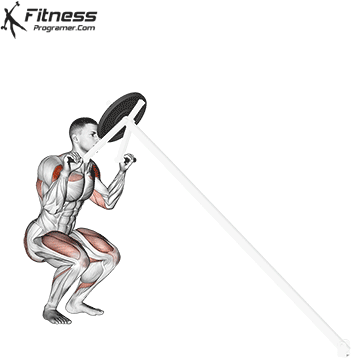
12. Clear and Press
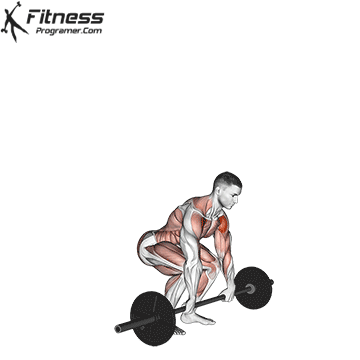
Clear and Press is a full-body compound train that mixes two highly effective actions: the clear, which entails lifting a weight from the ground to the shoulders, and the overhead press, which drives the load overhead. It primarily works the glutes, hamstrings, quadriceps, traps, deltoids, triceps, and core. This train is broadly utilized in Olympic weightlifting, energy and energy coaching, CrossFit, and purposeful health to construct explosiveness, coordination, and total-body energy.
Advisable repetitions
- For learners: 2–3 units of 4–6 reps utilizing dumbbells or kettlebells to be taught secure mechanics
- For purposeful health or conditioning: 3–5 units of 8–12 reps in circuits or complexes
- For energy and athletic efficiency: 4–5 units of three–5 reps with average to heavy weight, specializing in pace and method
- For muscular endurance: 2–3 units of 12–15 reps with lighter weight and excessive tempo
Variations:
- Dumbbell clear and press, kettlebell model
13. Push-Up
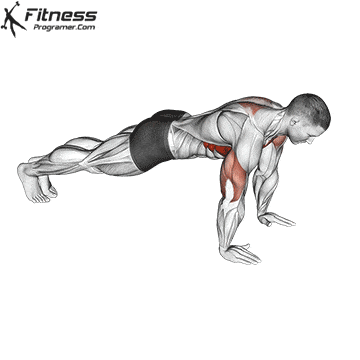
Push-Up is a traditional compound body weight train that primarily targets the chest (pectorals), triceps, and anterior deltoids, whereas additionally partaking the core, serratus anterior, and glutes to take care of full-body stress. It’s broadly utilized in energy coaching, hypertrophy routines, purposeful health, and body weight conditioning. As a result of it requires no gear, the push-up is accessible to all ranges and helps construct upper-body urgent energy, stability, and muscular endurance.
Advisable repetitions
- For learners: 2–3 units of 6–10 reps from knees or elevated floor (incline push-up) to construct type and management
- For hypertrophy: 3–4 units of 8–15 reps (use variations or tempo for added issue)
- For energy improvement: 3–5 units of 5–10 reps (weighted push-ups or superior variations like archer push-ups)
- For muscular endurance or conditioning: 2–3 units of 15–25+ reps with quick relaxation durations
- For purposeful health: 3–4 units of 10–20 reps, probably paired with core or pulling actions
Incline push-up, Decline push-Up, Bosu ball push-Up, Archer push-up
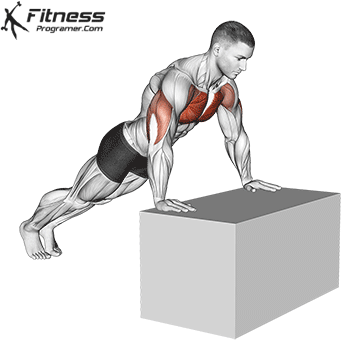
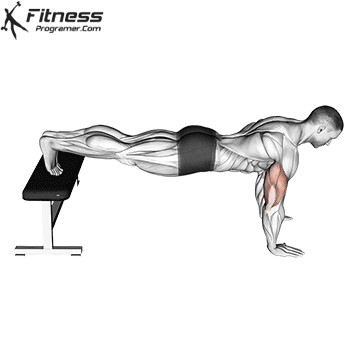
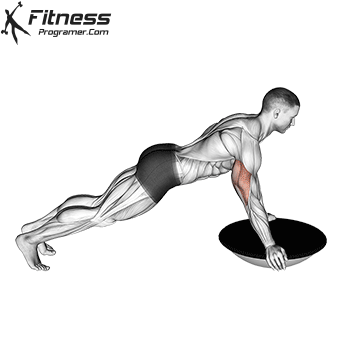

14. Parallel Bar Dips
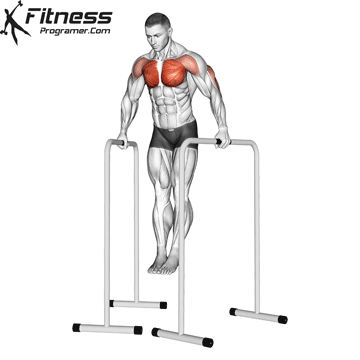
Parallel Bar Dips are a body weight compound pushing train that primarily targets the triceps, chest (particularly the decrease portion), and anterior deltoids, whereas additionally partaking the core and scapular stabilizers. Relying on torso angle, dips can emphasize both triceps (upright posture) or chest (ahead lean). This train is often utilized in energy coaching, hypertrophy routines, calisthenics, and gymnastics-based packages to construct upper-body urgent energy and muscular management.
Advisable repetitions
- For learners: 2–3 units of 6–10 reps utilizing help bands or dip machine assist
- For hypertrophy: 3–4 units of 8–12 reps (use added weight if wanted)
- For energy coaching: 3–5 units of 4–6 reps with weighted dips or superior variations
- For muscular endurance: 2–3 units of 12–20+ reps with body weight
- For purposeful or calisthenics coaching: 3–4 units of 6–15 reps, emphasizing vary of movement and shoulder stability
Variations:
- Bench Dips, Triceps dips, Chest dips, Korean dips
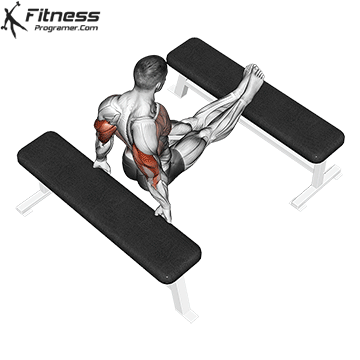
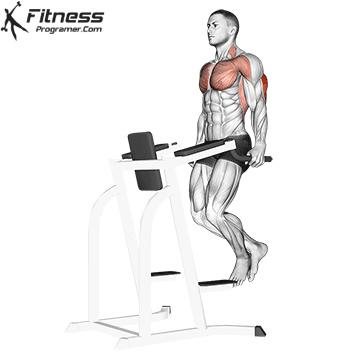
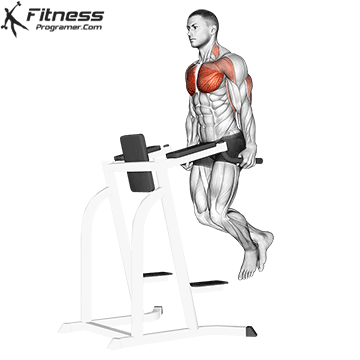
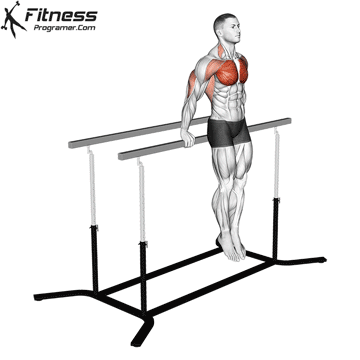
15. Farmer’s Carry
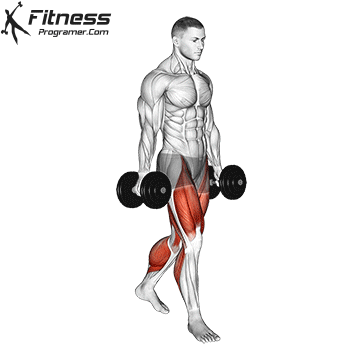
Farmer’s Carry is a full-body compound loaded carry train that primarily targets the grip, forearms, traps, shoulders, core, and glutes, whereas additionally partaking the legs for stabilization. It builds purposeful energy, improves postural management, and enhances core endurance and grip capability. This motion is a staple in strongman coaching, athletic efficiency, purposeful health, and fat-loss circuits, recognized for coaching real-world energy and stability beneath load.
Advisable repetitions / length
- For learners: 2–3 units of 15–30 meters or 20–30 seconds utilizing gentle to average weights with upright posture
- For grip and entice hypertrophy: 3–4 units of 30–40 seconds with heavy dumbbells, kettlebells, or farmer handles
- For energy and energy: 4–5 units of 20–30 meters carrying near-maximal load
- For conditioning and fats loss: 3–5 units of 40–60 seconds stroll with average weight, minimal relaxation
- For purposeful coaching: 3–4 units of 20–40 meters, specializing in posture and core engagement
16. Zercher Carry
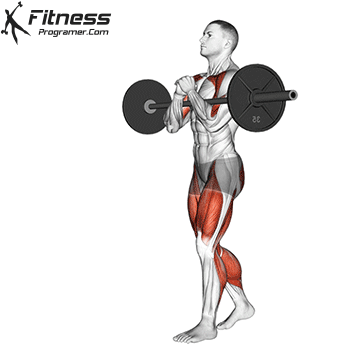
Zercher Carry is a loaded carry variation the place the load is held within the criminal of the elbows, emphasizing the core, higher again, glutes, hamstrings, and quadriceps, whereas additionally difficult biceps and forearm endurance. This compound motion builds midline stability, postural energy, and full-body bracing, making it standard in strongman coaching, purposeful energy packages, and athletic conditioning. The Zercher place mimics real-life odd object carrying and improves anti-flexion management.
Advisable repetitions / distance
- For learners: 2–3 units of 10–20 meters or 20–30 seconds with gentle to average load, specializing in type
- For core and postural energy: 3–4 units of 20–30 meters or 30–45 seconds with average to heavy load
- For energy coaching: 3–5 units of 15–25 meters utilizing a heavy sandbag, barbell, or loaded implement
- For purposeful health: 3–4 units of 20–40 meters specializing in upright posture and managed respiratory
- For conditioning circuits: 2–3 units of 30–60 seconds as a part of a metabolic finisher
17. Push Press
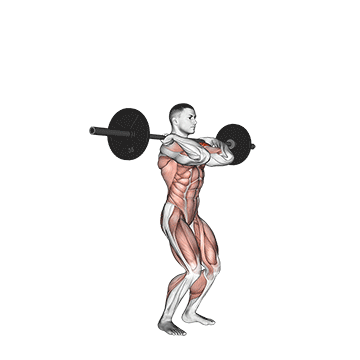
Push Press is a robust compound motion that mixes a partial leg drive with an overhead press, concentrating on the shoulders (deltoids), triceps, higher chest, and core, whereas additionally partaking the glutes, quads, and hamstrings to provoke the motion. It permits for heavier loading than a strict press by using hip and knee extension. Frequent in Olympic weightlifting, CrossFit, energy, and energy coaching, the push press builds explosiveness, upper-body energy, and athletic coordination.
Advisable repetitions
- For learners: 2–3 units of 5–8 reps, emphasizing dip-drive timing and overhead management
- For energy and athletic improvement: 3–5 units of three–5 reps with explosive intent and average to heavy load
- For hypertrophy: 3–4 units of 6–10 reps, specializing in shoulder drive and time beneath stress
- For energy coaching: 3–5 units of 4–6 reps with progressively heavier weights
- For purposeful health or conditioning: 3–4 units of 8–12 reps, typically paired with different compound lifts in circuits
18. Log Carry
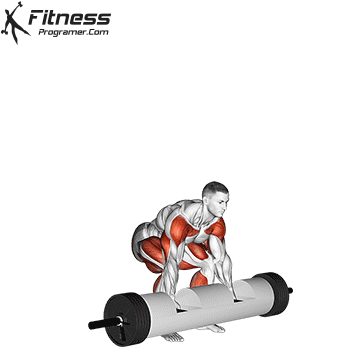
Log Carry is a strongman-style compound train that entails cleansing a log from the bottom to the shoulders and urgent it overhead. It primarily targets the shoulders, triceps, higher chest, and higher again, whereas additionally partaking the glutes, hamstrings, quads, core, and grip. The neutral-hand place and thick diameter of the log add a novel problem, making it wonderful for constructing purposeful upper-body energy, urgent energy, and real-world lifting capability. It’s a staple in strongman competitions, but in addition worthwhile in energy, energy, and athletic coaching.
Advisable repetitions
- For learners: 2–3 units of 4–6 reps utilizing a lightweight log or log-shaped implement to observe secure mechanics
- For energy and energy improvement: 3–5 units of three–5 reps with heavy hundreds and full-body explosiveness
- For hypertrophy (higher physique focus): 3–4 units of 6–10 reps with average load, controlling each clear and press phases
- For strongman or sport-specific coaching: 4–6 units of 1–3 heavy reps with strict or push press variations
- For purposeful coaching: 3–4 units of 4–8 reps, emphasizing type, coordination, and overhead lockout
Different Olympic Variations: Barbell snatch, Energy snatch, Muscle snatch, Kettlebell cut up snatch
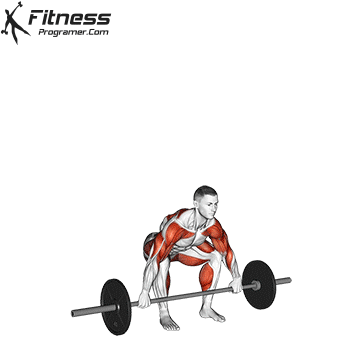
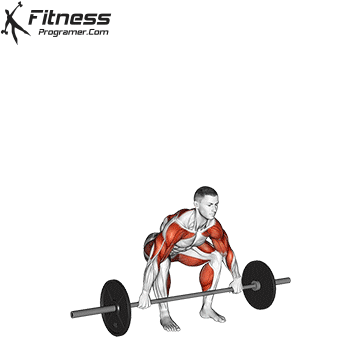
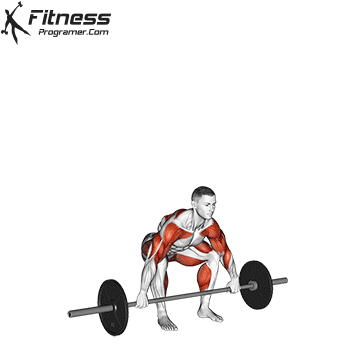
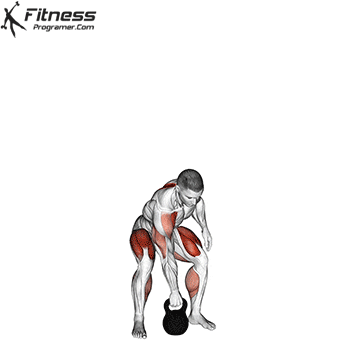
19. Rowing Machine
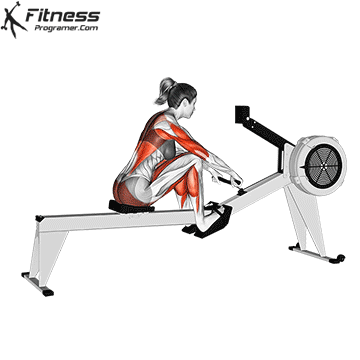
Rowing Machine is a full-body, compound cardiovascular train that mimics the movement of rowing a ship. It primarily works the again muscle mass (lats, rhomboids, traps), hamstrings, glutes, calves, and core, whereas additionally partaking the biceps and forearms in the course of the pulling section. Not like many cardio machines, rowing emphasizes posterior chain improvement, making it worthwhile in conditioning, fat-loss, purposeful coaching, and endurance packages. It builds cardio capability, muscular endurance, and reinforces synchronous motion patterns.
Advisable repetitions / length
- For learners: 2–3 units of 250 meters at straightforward tempo, specializing in drive mechanics and posture
- For conditioning and fats loss: 3–5 rounds of 250–500 meters or 1–3 minutes at average to excessive depth
- For endurance coaching: 20–40 minutes of steady-state rowing at 60–70% max effort
- For prime-intensity interval coaching (HIIT): 5–10 intervals of 30 seconds max effort / 60 seconds relaxation
- For purposeful circuits: 200–500 meters between energy workouts, 3–4 rounds complete
20. Dumbbell Burpees
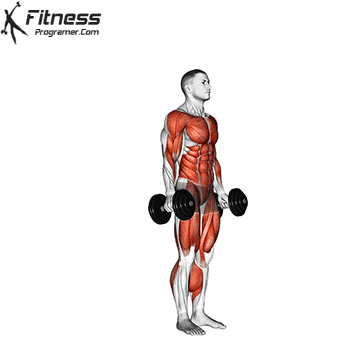
Dumbbell Burpees are a dynamic, full-body compound train that mixes a squat thrust, push-up, and dumbbell deadlift or snatch into one high-intensity motion. This variation primarily targets the chest, shoulders, triceps, quads, glutes, hamstrings, and core, whereas additionally bettering cardiovascular conditioning and explosive energy. Dumbbell burpees are standard in CrossFit, HIIT, purposeful health, and fat-loss packages, providing a difficult mix of energy, endurance, and metabolic conditioning.
Advisable repetitions
- For learners: 2–3 units of 6–8 reps utilizing lighter dumbbells and stepping by means of the motion to scale back impression
- For conditioning and fats loss: 3–5 units of 8–15 reps with average dumbbells and minimal relaxation
- For prime-intensity interval coaching (HIIT): 20–30 seconds of max-effort burpees adopted by 30–40 seconds relaxation, 4–6 rounds
- For purposeful health: 3–4 units of 6–12 reps, optionally paired with squats, lunges, or rows
- For muscular endurance: 2–3 units of 12–20 reps with gentle dumbbells and regular pacing
Variations: Body weight burpees, Jack burpees, Navy seal burpee, Dumbbell satan press
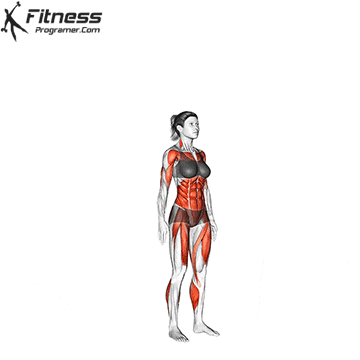
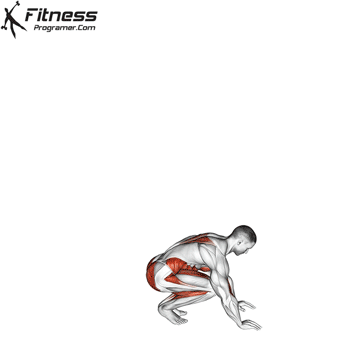
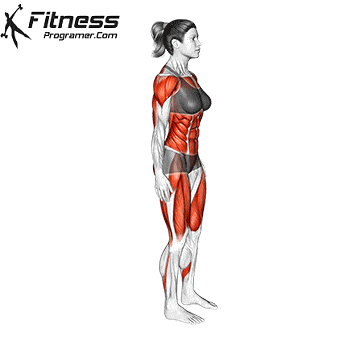
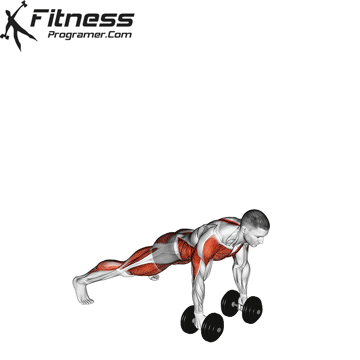
21. Turkish Get-up
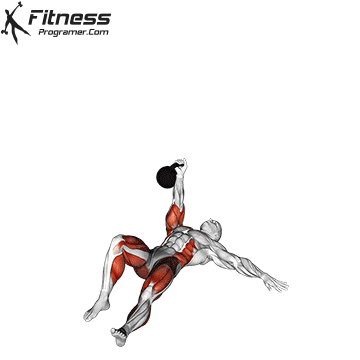
Turkish Get-Up is a sluggish, managed full-body compound train that entails transitioning from mendacity on the ground to a standing place whereas holding a weight overhead. It really works almost each main muscle group, together with the shoulders, triceps, core, glutes, hamstrings, quads, and higher again, whereas additionally demanding joint stability, mobility, and neuromuscular management. It’s a staple in purposeful coaching, mobility packages, kettlebell routines, and rehabilitative energy work, enhancing physique consciousness, coordination, and motion high quality.
Advisable repetitions
- For learners: 2–3 units of body weight or shoe-balance reps to be taught method earlier than including load
- For core management and shoulder well being: 2–3 units of two–5 reps per facet utilizing gentle to average load
- For energy and stability: 3–4 units of two–4 reps per facet with a average to heavy kettlebell or dumbbell
- For purposeful coaching and mobility: 3–5 units of 1–3 sluggish, managed reps per facet, specializing in type and transitions
- For conditioning (superior athletes): 4–6 rounds of alternating reps for time, utilizing a average load
22. Wall Ball
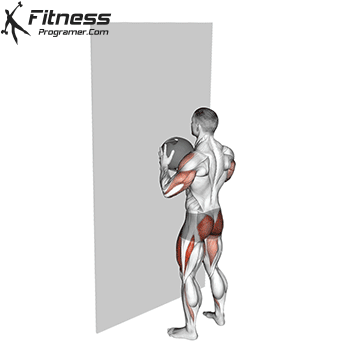
Wall Ball is a high-intensity, full-body compound train that entails performing a entrance squat adopted by an explosive overhead throw of a medication ball to a goal on the wall. It primarily targets the quads, glutes, hamstrings, shoulders, chest, and core, whereas additionally coaching explosiveness, coordination, and cardiovascular endurance. Wall balls are a cornerstone of CrossFit, HIIT circuits, and metabolic conditioning exercises, providing each muscular and cardio challenges in a single motion.
Advisable repetitions
- For learners: 2–3 units of 6–10 reps utilizing a lightweight ball, making certain correct squat type and managed throws
- For conditioning and fats loss: 3–5 units of 15–25 reps utilizing a moderate-weight ball with minimal relaxation
- For muscular endurance: 2–3 units of 20–30 reps specializing in constant tempo and depth
- For purposeful health or CrossFit WODs: AMRAP (as many reps as doable) in 60–90 seconds or for rounds (e.g., 21-15-9 format)
- For energy improvement: 3–4 units of 8–12 reps with a heavier ball and give attention to pace in the course of the throw
23. Dumbbell Iron Cross
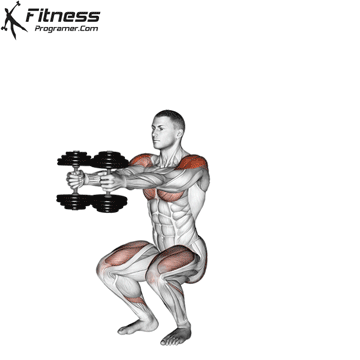
Dumbbell Iron Cross is a standing, full-body compound motion that challenges shoulder stability, core energy, and postural management. Holding a dumbbell in every hand with arms prolonged in a “T” place at shoulder peak, this train primarily targets the deltoids, traps, higher again, and core, whereas partaking the glutes, legs, and grip for stability. It’s utilized in purposeful coaching, core conditioning, and rotator cuff strengthening, selling shoulder endurance, postural integrity, and isometric management.
Advisable repetitions
- For learners: 2–3 units of 10–20 seconds maintain with gentle weights or body weight, emphasizing shoulder alignment
- For shoulder and core endurance: 3–4 units of 20–40 seconds maintain with gentle dumbbells
- For purposeful energy and posture: 3–4 units of 8–12 reps (dynamic raises or managed stroll)
- For mobility and stability: 2–3 units of 10–15 reps with sluggish tempo and give attention to scapular positioning
24. Battle Rope
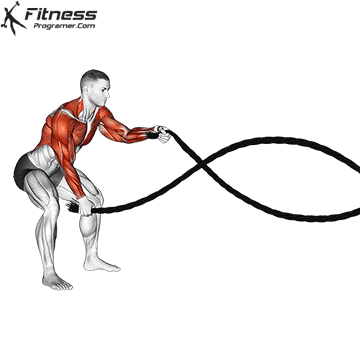
Battle Rope workouts are high-intensity, compound actions that mix upper-body energy, core stability, and lower-body engagement. Actions resembling alternating waves, slams, or circles primarily work the shoulders, arms (biceps and triceps), higher again, and core, whereas additionally involving the legs and glutes for grounding and motion. Fashionable in HIIT, purposeful coaching, and athletic conditioning, battle ropes construct muscular endurance, explosiveness, and metabolic conditioning.
Advisable repetitions / length
- For learners: 2–3 units of 15–20 seconds utilizing alternating waves at average pace and give attention to posture
- For conditioning and fats loss: 4–6 rounds of 20–30 seconds max-effort waves or slams with 30–60 seconds relaxation
- For muscular endurance: 3–5 units of 30–60 seconds of steady waves or timed circuits
- For energy improvement: 3–4 units of 10–15 explosive slams with full-body power
- For purposeful coaching circuits: 3–4 rounds of 15–20 seconds as a part of a metabolic finisher
25. Backward Medication Ball Throw
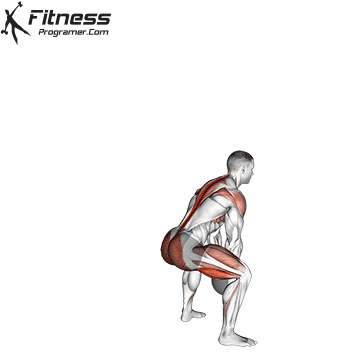
Backward Medication Ball Throw is an explosive, full-body compound motion that emphasizes hip extension, posterior chain energy, and energy output. It primarily targets the glutes, hamstrings, decrease again, and shoulders, whereas additionally partaking the core to stabilize the backbone and switch power. This athletic motion is utilized in energy improvement, sports activities efficiency, and purposeful coaching to reinforce triple extension and explosive hip drive—key parts in sprinting, leaping, and lifting.
Advisable repetitions
- For learners: 2–3 units of 4–6 reps utilizing a lightweight ball, specializing in method and coordination earlier than including energy
- For energy and athletic efficiency: 4–6 units of three–5 explosive throws with maximal intent and full relaxation between units
- For strength-speed improvement: 3–5 units of 5–8 reps utilizing a moderate-weight ball with give attention to hip drive
- For purposeful coaching: 3–4 rounds of 5–10 reps as a part of a power-focused circuit
Different Variations: Med ball rotational throw, One Arm med ball slam, Med ball half kneeling chest push, Step behind rotational med ball throw

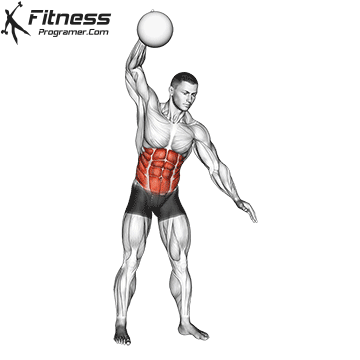
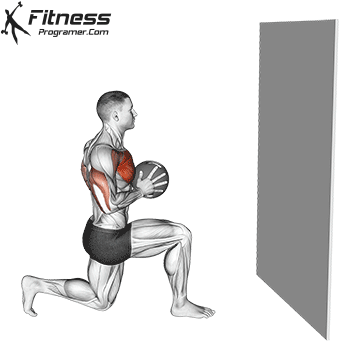
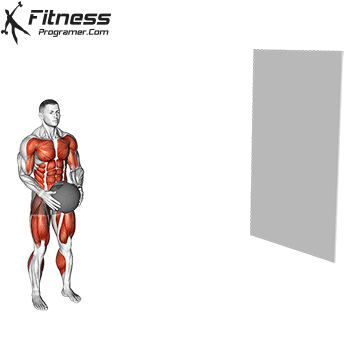
Programming Steering
It’s one factor to know which compound workouts exist—however understanding tips on how to construction them is essential to creating actual progress. Your routine ought to be primarily based in your coaching aim, expertise degree, and accessible gear.
Right here’s how one can set up compound workouts into an efficient program:
1. Select a Break up or Format
Choose a coaching cut up that matches your schedule and restoration skill:
- Full-body (3x/week): 3–5 compound workouts per session (For instance: 3-day compound exercise)
- Higher/Decrease Break up (4x/week): Alternate between upper- and lower-body compound lifts
- Push/Pull/Legs (3–6x/week): Group comparable motion patterns (e.g., squats, hinges, presses)
- Energy + Conditioning Hybrid: Alternate energy days (heavy compound lifts) with metabolic circuits (pattern routine: 3×5 energy coaching for learners)
For Hypertrophy: Mix Compound and Isolation Workouts
To construct muscle successfully, it’s vital to incorporate each compound and isolation workouts in your exercise routine. Compound actions stimulate massive quantities of muscle mass and mean you can raise heavier, whereas isolation workouts goal particular muscle mass for detailed improvement and muscular symmetry.
Right here’s how a balanced hypertrophy exercise may search for completely different muscle teams:
Chest
- Barbell Bench Press (compound) – Works chest, shoulders, triceps
- Incline Dumbbell Press (compound) – Emphasizes higher chest and entrance delts
- Dumbbell Flys (isolation) – Isolates the chest for a deep stretch and peak contraction
Legs
- Squats (compound) – Targets quads, glutes, hamstrings, and core
- Leg Press (isolation) – Focuses on the quads with lowered core involvement
- Leg Extensions (isolation) – Isolates the quadriceps
Again
- Pull-Ups (compound) – Works lats, biceps, and higher again
- Lat Pull-Downs (compound) – Much like pull-ups, scalable resistance
- Straight Arm Lat Pull-Downs (isolation) – Targets the lats with minimal arm involvement
Shoulders
- Army Press (compound) – Hits entrance delts, higher chest, and triceps
- Lateral Raises (isolation) – Focuses on the facet delts for width
- Rear Delt Flys (isolation) – Isolates the rear delts for balanced shoulder improvement
Tip: Begin your exercises with compound lifts when your vitality and energy are highest. Observe with isolation workouts to maximise muscle fatigue and progress. End with conditioning or core work if desired
2. Match Units and Reps to Your Objective
| Objective | Reps | Units | Relaxation | Notes |
|---|---|---|---|---|
| Energy | 3–6 reps | 3–6 | 2–5 min | Give attention to barbell lifts, decrease quantity, greater weight |
| Hypertrophy | 6–12 reps | 3–5 | 60–90 sec | Reasonable weights, greater quantity for progress |
| Endurance | 12–20+ reps | 2–4 | 30–60 sec | Body weight, dumbbell circuits |
| Energy/Explosive | 1–5 reps | 3–6 | 2–3 min | Use cleans, swings, jumps, throws |
| Fats Loss / HIIT | Timed units | 3–6 rounds | Brief rests | Compound actions in circuits or intervals |
3. Use Development
Monitor your lifts and step by step enhance load, quantity, or motion complexity over time. Instance:
- Week 1–2: Goblet Squat →
- Week 3–4: Entrance Squat →
- Week 5+: Barbell Again Squat
4. Stability Motion Patterns
Guarantee your plan covers all key motion patterns to stop imbalances:
- Push (bench press, push-up, overhead press)
- Pull (row, pull-up, deadlift)
- Squat (again squat, goblet squat, lunge)
- Hinge (deadlift, RDL, kettlebell swing)
- Carry/Core (farmer’s carry, Turkish get-up, plank variations)
Conclusion
Compound workouts are the basis of any efficient coaching program, providing unmatched effectivity and outcomes. By incorporating quite a lot of compound lifts into your routine, you’ll prepare smarter—not simply tougher. You’ll enhance coordination, enhance your metabolism, and construct a physique that’s not solely stronger, however extra purposeful and resilient.
References
- Schoenfeld, B. J. (2010). The mechanisms of muscle hypertrophy and their software to resistance coaching. Journal of Energy and Conditioning Analysis, 24(10), 2857–2872. https://doi.org/10.1519/JSC.0b013e3181e840f3
- Król, H., & Piech, Okay. (2020). The impression of multi-joint and single-joint energy workouts on bodily efficiency. Journal of Human Kinetics, 72, 49–58.
- American Faculty of Sports activities Medication. (2021). ACSM’s Tips for Train Testing and Prescription (eleventh ed.).
- Schoenfeld, B. J., & Grgic, J. (2018). Proof-based tips for resistance coaching quantity to maximise hypertrophy. Energy and Conditioning Journal, 40(4), 107–112.


